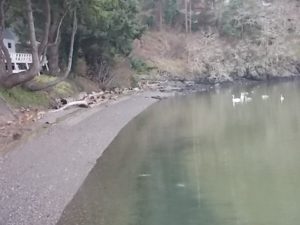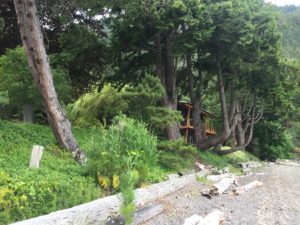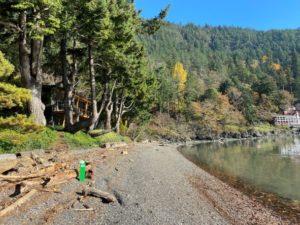Green Shores | Case Studies
The Green Point Project, Cowichan Bay, BC
↪ Green Shores for Homes project
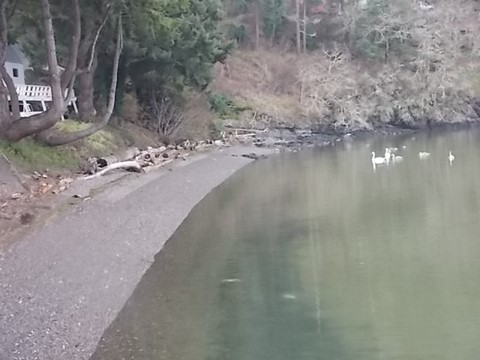
Before
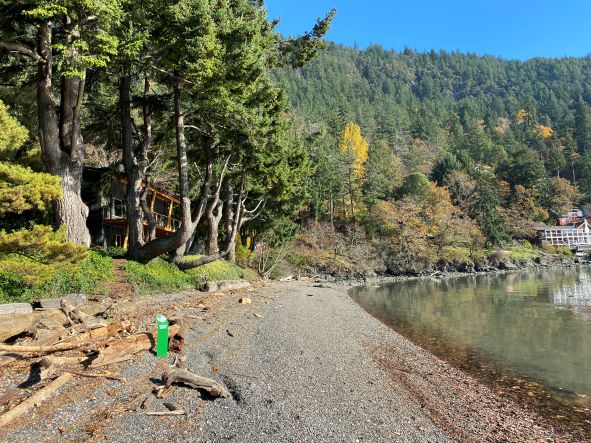
After
Project Overview
| Location: Cowichan Bay, BC | Project area: 2.5 ha |
| Year completed: 2020 | Awards: Triple certification: Green Shores for Homes Orca Certification; Living Building Challenge Petal Certification (Place, Beauty, Water by the Living Futures Institute; and Passive House Certification (pending) from the Passive House Institute |
| Shoreline length: 335 m | Shore type: Mixed bedrock and sediment |
| Green Shores rating achieved: ORCA (Level 2) | Total points: 43 |
Site Description
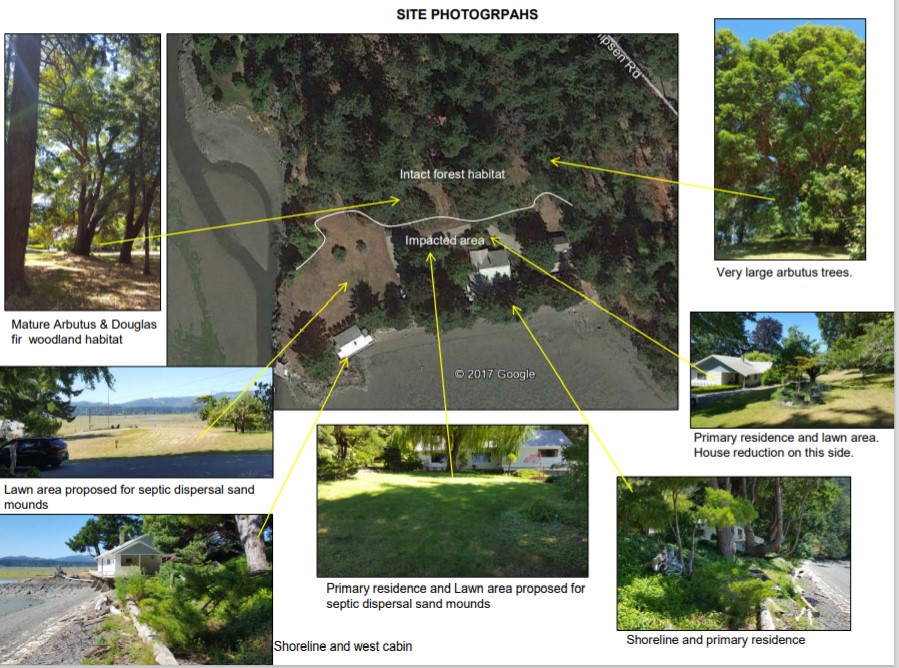
Green Shores for Homes project area is the ‘whole site’. The property is located adjacent to the Cowichan River estuary with its important habitat for migratory birds, spawning salmon and small amphibians. Shoreline is relatively sheltered from prevailing SE winds and is a combination of bedrock and small cobble. Upland area is a sensitive Garry Oak ecosystem within the Coastal Douglas-fir (CDF) biogeoclimatic ecosystem classification zone. Extensive Indigenous use of this site has been noted through onsite archaeological surveys.
Design Shematic
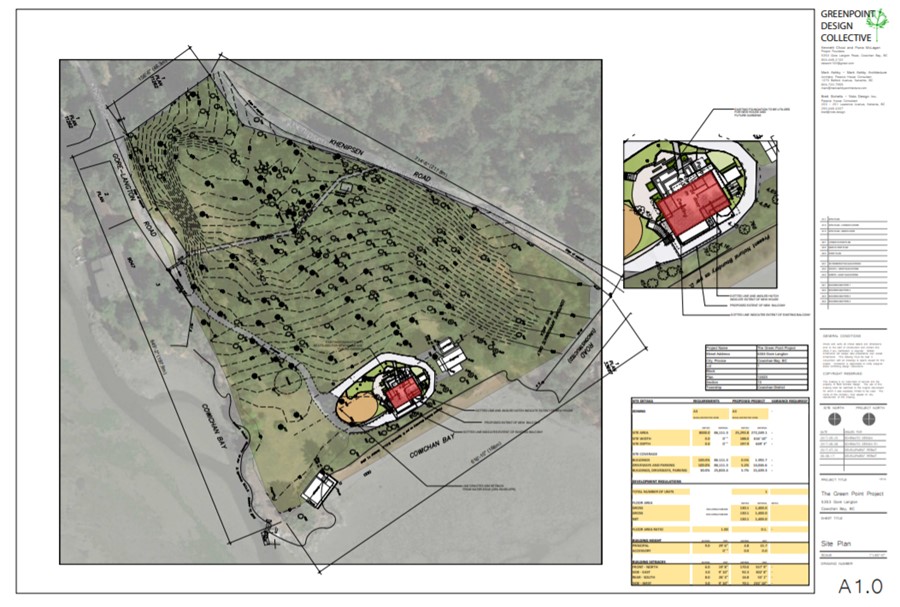
Project Team and Affiliated Organizations
The Green Point Project Team was very multi-disciplinary with the following participants: Architects, Archaeologist, Biologist, Landscape Architect, Contractors and Engineers. Extensive consultation with local Indigenous peoples was also an important part of the project.
The team also collaborated with the Cowichan Estuary Restoration Conservation Association (CERCA), and numerous national and international organizations/educational institutions such as UBC, BCIT, VIU, and Cornell University.
Project Objectives
- Restore and maintain the foreshore function and ecology.
- Restore and re-wild the upland areas to protect the sensitive CDF ecosystem and the estuarine foreshore environment.
Work Plan
- Site assessments including evaluation of archaeological resources, local planning and development approvals; improvement of the septic system.
- Removal of the former principal residence according to requirements for the Living Building Challenge: reuse or recycle as much of the demolished building as possible, reduce the footprint of the new residence, and utilize natural materials that allow for zero energy input requirement (Passive Home).
- Restoration of the septic site area with native grasses, rewilding of vegetated areas around the home, installation of bird boxes and rainwater collection.
- Removal of invasive vegetation and re-wilding throughout the site is ongoing.
Description of how the project meets Green Shores principles
> Maintained/ Enhanced Habitat Function and Diversity
- Shoreline habitat function maintained through retention of large woody debris.
- Riparian stability is maintained; conversion from invasives to native plants is in progress. Significant care must be taken to avoid excessive soil disturbance in riparian area due to presence of archaeological resources.
- Large overhanging trees were kept intact and provide input to the food chain of the shoreline.
- Deleterious materials such as washed up plastics, old rowboats and a satellite dish on the shoreline
> Preserved/Restored Shoreline Physical Processes
- Large woody debris retained on the shoreline continues to protect the upper interface of the riparian; particularly during high tide levels. No active erosion is evident.
- Access to the beach is minimized with a small natural trail that was in place and has not been enlarged.
> Ecological Services Provided
- Re-wilding process continues to protect the ecological characteristics of this rare CDF site which includes Garry Oak, camas, natural grasses and a very old Yew tree.
- Reduced impervious area through removal of paved driveway between the principal residence and the shoreline, will enhance infiltration of precipitation downward into groundwater.
- Newly installed septic system is state of the art, and ensures that no contaminants reach the shoreline.
> Shoreline Collaboration and Public Education
- The Green Point Project was an exemplary example of public information and education with numerous forms of outreach using Instagram, a project website, and onsite meetings and demonstration days for many agencies and groups including the Cowichan Bay Estuary Restoration Association (CERCA), educational institutions such as VIU, BCIT, UBC, Cornell and University of Washington, and other environmental certification organizations such as Passive House and Living Building Challenge.
> Additional Notes
- This Green Shores for Homes project was for the full site and protection of the upland through numerous measures included: minimal site disturbance, an extensive landscape management plan, presence of cavity nesting bird boxes, and retention of sensitive ecosystem vegetation.

